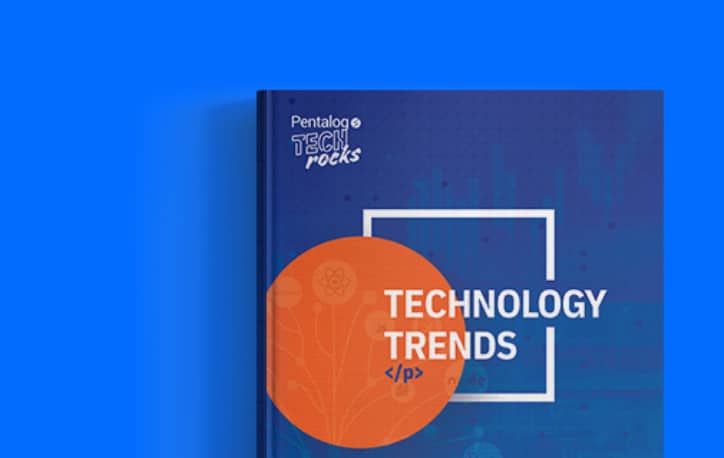When teams inherit messy data with a mandate to fix it fast, many turn to well-known enterprise platforms like IBM InfoSphere QualityStage. It’s powerful, proven, and built for scale.
But for all its strengths, InfoSphere QualityStage may not be the right fit for everyone. For many teams, especially those operating outside the IBM’s ecosystem – or those who need faster, no-code data matching solution with more agile deployment and greater hands-on control – the tool can introduce additional configuration layers and governance alignment requirements.
That’s where Data Ladder offers a distinctive advantage as a modern, transparent IBM InfoSphere QualityStage alternative. Its data quality tool – DataMatch Enterprise (DME) – delivers fast, transparent, high-accuracy matching and cleansing without requiring deep platform integrations or extensive technical resources.
In this guide, we break down both platforms, comparing their core features and highlighting key differences, so you can decide which one is actually best for your team’s data quality mandate.
Whether you’re new to the data matching scene or searching for a simpler or faster IBM InfoSphere alternative, this post will help you make the right decision.
Where Data Ladder Shifts the Equation
Many organizations choose enterprise-level data tools for their ability to manage massive volumes of data within structured MDM pipelines. But what they don’t always account for is the tradeoff:
- Significant setup and infrastructure demands
- A steep learning curve
- Slower time-to-value
- Limited visibility into match logic for business users
That’s where Data Ladder shifts the equation.
It delivers matching accuracy that rivals – or even exceeds – enterprise platforms, without the overhead. If your goal is fast, transparent, and powerful data matching across sources (not just feeding an MDM), Data Ladder can be a more accessible fit.
Data Ladder vs. IBM InfoSphere QualityStage: Executive Summary
| Feature | IBM InfoSphere QualityStage | Data Ladder (DataMatch Enterprise) |
| Matching Algorithms | InfoSphere matching tool uses probabilistic, deterministic algorithms. It is customizable; configured visually or via scripts; supports survivorship frequency logic | Fuzzy, phonetic, exact, numeric, and domain-specific algorithms. Built-in rule libraries. Fully configurable without coding |
| Ease of Use | Designed for technical users; visual design via Designer client; requires some training | Designed for business and technical users alike, with drag-and-drop interface, visual rule building, no-code customization, and real-time rule testing |
| Deployment | On-premise, hybrid, or via IBM Cloud Pak for Data; best within IBM architecture | Lightweight; deploys as standalone or hybrid; cloud and on-prem supported; can be integrated into existing tech stack |
| Speed to Value | May require metadata alignment and setup/tuning cycles; can have a steeper learning curve | Rapid setup, intuitive, no-code UI; configurable in a day – even for large or complex datasets – with immediate match results |
| Integration | Strongest integration within IBM’s ecosystem (e.g., IBM InfoSphere MDM, IBM InfoSphere DataStage matching module). Broad support for external sources via APIs and connectors, though setup may require configuration and orchestration | Direct integration with major CRMs (Salesforce, HubSpot), ERPs, flat files, SQL/NoSQL databases, REST APIs, and cloud sources. Plug-and-play connectors |
| Data Matching Transparency | Transparent but requires familiarity with scoring models and survivorship rules | Fully transparent match logic. Visual rule builder with scoring weights and real-time preview |
| Scalability | Built for high-volume, batch workloads in structured ETL environments | Horizontal scalability; tested with 100M+ records using in-memory processing for near real-time results. |
| Cost | InfoSphere pricing is tiered, often bundled with platform components | Flat, transparent pricing; significantly lower TCO (70–90%) compared to traditional enterprise solutions |
3 Areas Where Data Ladder Clearly Outperforms
1. Match Logic Visibility
| IBM InfoSphere QualityStage | Data Ladder (DataMatch Enterprise) |
QualityStage matching tool provides match scoring, survivorship, and traceability, but understanding the logic may require experience with metadata layers and Designer tooling. | DataMatch Enterprise gives you full control, visibility, and transparency with: – A drag-and-drop interface. – Visual rule builder with fuzzy, phonetic, exact, numeric, and domain-specific match options. – Real-time previews of match outputs. – Weighted scoring for custom logic (e.g., name is 70%, email is 30%) – fully adjustable. – Easy match rule audits – no scripting or metadata navigation required. |
2. Speed to Deployment
| IBM InfoSphere QualityStage | Data Ladder (DataMatch Enterprise) |
| Implementing this IBM data quality tool involves: – Working with InfoSphere Data Architect – Building metadata models – Integration with IBM InfoSphere Master Data Management (MDM) or IBM InfoSphere DataStage | DME is a faster alternative to InfoSphere for data matching. It can be deployed within minutes – no coding, no dependency on broader infrastructure, making it a great fit if you’re looking to replace IBM QualityStage for faster results. With DME, teams can import dirty data, profile, match, standardize and export clean records within hours. |
3. Cross-System Flexibility
| IBM InfoSphere QualityStage | Data Ladder (DataMatch Enterprise) |
IBM InfoSphere software is optimized for use within IBM’s ecosystem. It can be extended but benefits from platform alignment. | DataMatch Enterprise is platform-agnostic – ready for your SQL Server, Snowflake, Excel, Salesforce, Oracle, or any hybrid environment without requiring re-architecture. It doesn’t care where your data lives – just how fast and accurately it can be matched. |
Use Case Fit
IBM InfoSphere QualityStage:
Best for…
- Large enterprises with IBM infrastructure and MDM workflows
- Organizations with mature data governance programs and technical teams
- Projects requiring metadata-driven workflows, data lineage, and stewardship alignment
- Regulated industries needing confidence scoring, survivorship logic, and centralized audit-ready match documentation
- Long-term architectures where matching integrates into enterprise-wide ETL and governance pipelines
Data Ladder (DataMatch Enterprise):
Best for…
- Businesses (of any size) needing to fix data quality fast across multiple systems
- Teams without dedicated MDM/governance infrastructure or statistical expertise
- Business users and data teams that need full control and visibility into match logic – without writing codes
- Regulated industries (e.g., healthcare, finance, public sector) requiring traceable, explainable match results without complex metadata modeling
- Projects where speed, transparency, and ease of configuration are critical
IBM Infosphere QualityStage vs. DataMatch Enterprise: Real-World Scenarios
| Scenario | IBM InfoSphere QualityStage | DataMatch Enterprise |
| Merging Customer Data from Multiple CRMs | Supports accurate resolution through custom rules, confidence scoring, and survivorship logic. Setup and tuning may involve technical effort and multiple iterations. | Uses out-of-the-box fuzzy/phonetic matching templates. Business users can configure rules and see match confidence instantly. |
| Deduplicating Healthcare Records | Effective, but setup and compliance alignment may require technical effort; longer to implement and configure. | Fast to implement. Built-in match types for names, addresses, dates of birth, and medical IDs. Fast configuration, easy to validate and tune |
| Marketing List Cleanup | Capable but can be overkill for smaller, ad hoc deduplication jobs. Requires training (user familiarity) to use effectively. | Fast and effective. Load CSVs, define matching fields, review results visually, and export clean list in minutes. |
Choose IBM InfoSphere QualityStage if:
- You’re standardizing data quality inside an IBM-powered MDM or ETL ecosystem
- You need robust stewardship, metadata modeling, and enterprise auditability
- You’re operated in regulated, metadata-governed environments
Choose Data Ladder if:
- You want business teams to own and control data cleansing, standardizing and matching workflows
- You need to deduplicate large datasets or consolidate data from diverse sources – fast
- You need match results you can easily audit or explain to stakeholders
- You want a tool with transparent logic, no lock-in, and rapid time to value
- You’re looking for a fast, no-code alternative to IBM InfoSphere QualityStage for data matching
Why Data Ladder Wins in the Real World
IBM QualityStage is powerful, but demands high investment – in budget, time, and technical skills. It excels in enterprise environments, especially where IBM infrastructure and MDM workflows are already in place.
For most business units or data teams outside that scope, Data Ladder can be the smarter fit. It delivers faster value, lower complexity, and greater usability – without sacrificing accuracy or control.
- No mandatory IT dependency
- No onboarding curve
- Seamless integration with your existing stack – no re-architecture required
- Results you can understand, trust, and act on
Whether you’re tackling customer record duplicates, consolidating CDM entries, or preparing for a system migration, Data Ladder can significantly enhance your existing infrastructure by providing speed, control, and confidence over your data matching workflows – with results you can rely on.
Ready to replace IBM InfoSphere QualityStage with a faster, more transparent matching solution?
Download a free Data Ladder trial
Or
Book a personalized demo with our expert to see how fast high-quality data matching can really be.
Frequently Asked Questions
1. What’s the best no-code alternative to IBM InfoSphere QualityStage?
If you’re looking for a no-code IBM InfoSphere alternative, Data Ladder’s DataMatch Enterprise (DME) is a top contender. It offers advanced fuzzy, phonetic, and exact matching algorithms, all within a drag-and-drop interface. Unlike QualityStage, it doesn’t require scripting or metadata modeling, making it easier for business users and analysts to match and cleanse data quickly.
DME also provides full match logic transparency, including real-time previews and weighted scoring.
2. Can I replace IBM QualityStage without rebuilding my architecture?
Yes. DataMatch Enterprise integrates directly into your existing tech stack, without requiring platform re-architecture. It’s a flexible solution that allows teams to replace IBM QualityStage for data matching quickly and without deployment overhead.
3. How does Data Ladder compare to IBM InfoSphere for data matching?
Data Ladder provides a more agile and transparent approach to data matching. Compared to IBM InfoSphere QualityStage, it delivers:
- Easier setup (no-code configuration, no metadata layers)
- Faster time to value
- Transparent, explainable match logic
- Full control over match rules with real-time previews
- Significantly lower total cost of ownership
These features make DME a strong IBM InfoSphere alternative for teams seeking better usability, clarity, speed, and affordability without compromising matching accuracy.
4. Is DME a faster data matching tool than IBM InfoSphere?
Yes. DataMatch Enterprise is widely known for its speed. It deploys within hours and provides immediate match results through in-memory processing. There’s no complex metadata setup, scripting, or platform dependency, making it ideal for teams that need results fast.





































